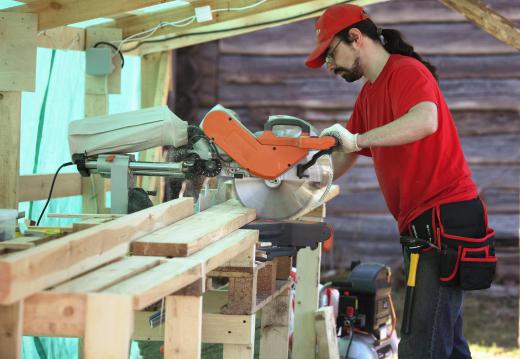A featherboard is a small, angled piece of wood or plastic with small parallel fingers cut into the angled edge. Those fingers are spaced at 1/8 inch (about 3.175 mm) to 1/4 inch (about 6.35 mm) apart. When clamped or secured to the table or fence, the small fingers on a featherboard flex slightly to allow a piece of wood to slide past while keeping pressure on that piece of wood so it does not jam in the saw, radial-arm saw, or router table.
With a featherboard in place, the wood being cut is less likely to twist between the blade and the fence, and produce a kickback or bend the blade. A featherboard helps keep the cut in a long piece of wood smooth and clean. It is especially helpful when cutting small pieces that can be difficult to safely secure.

A featherboard can be attached to the table or to the fence. Homemade versions of this tool are easy to make from defect-free extra plywood or scrap wood, and instructions for making a featherboard can be found in a wide variety of carpentry books and from online sources. This homemade tool can be clamped to the table to keep a piece of wood tight against the fence or to the fence to keep a piece of wood tight against the table. Sometimes, two or more featherboards may be used together to secure a piece of wood against both the table and the fence as it slides through the saw.
To use a featherboard safely, the short end of angle must be facing the front of the saw. Otherwise, it will have an opposite effect on the piece of wood and prevent the wood from moving through the saw. This may cause the wood to jam and twist the blade.
Several manufacturers, such as Bench Dog, Magswitch, and Grip-Tite, produce magnetic versions that eliminate the need for a clamp, or offer easy-to-use table saw featherboards with specially designed clamps that lock into the miter slot or screw into the fence. The manufactured ones are often made of durable polymer and can also be purchased at local hardware stores. Use of a featherboard adds an extra layer of safety, prevents blades from twisting, and gives a cut piece of wood a higher quality finish.
